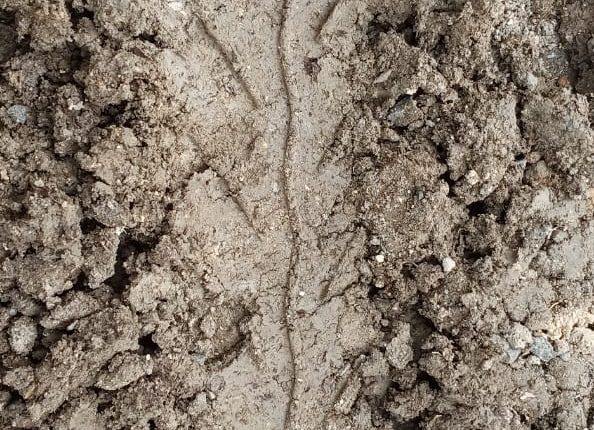A large number of crimes has taken place since earlier times with the involvement of vehicles including hit and run accidents, automobile thefts, kidnapping cases, murder cases, robbery. shooting incidents assaults, etc. These crimes, whether involves vehicle-vehicle, vehicle person, vehicle-other object, or the vehicles that leave the scene. These tire marks and skid marks are basically the mail patterns or the trail marks formed by the tires of the vehicle, be it a car, bike, truck or other automobile. These marks helps in establishing the link of a particular vehicle with the crime and thereby finding the identity of the suspect.
The modem criminal finds the automobile as an indispensable part of his equipment, in the commission of crime, disposal of dead bodies and for other criminal activities.
TIRE MARKS
Tire marks are defined as those impressions or marks left by the time at any place. These impressions are considered valuable us of these generally encountered at a scene of crime as a result of the contact of the time tread a pan of tires with the road.
In unusual circumstances, a characteristic feature of a tyre such as, a peculiar injury or any imperfection to the tyre is also noted. In such cases identification may often be made with a very high degree of certainty. Usually, no such feature are present and the overall nature of the tread will be examined.

Tread Characteristicstic
The manufacturers alter the characteristics of tyre treads. Over a period of time various moderation may take place. Most tyres have a parallel series of zig-zag tread design. The widths between them may be different; the ratio of length to its width may vary; the degree of parallelism of the ridges is also quite different. In some tyres the ridges are wholly or partially cut transversally, so as to grip a smooth roadway more effectively, while others are designed to make a vacuum on the road when compressed. The tyre tread should be studied with reference to the following features
(1) The design or pattern of the ridges.
(2) The scales e.g. distances between the ridges, angles, or other prominent features.
(3) The relation and positioning of similar ridges with regard with one another.
(4) Unusual features, whether originally present in the tread or as a result of repair, wear, or accident.
(5) Extent and nature of damage.
A circumstance, which must be considered in such comparisons, is that the tyre when compressed on the road does not have the identical pattern as the uncompressed tyre. Therefore, it is necessary to match a known tyre track with a questioned tyre track, instead of comparing the latter directly with the tyre.
Direction of Travel
By examining the tyre track it may be possible to notice the direction of travel. If a car is traveling forward in a straight line only the impressions of the rear tyres are going to be visible. If the car has reversed, then only the impressions of the front tyres are going to be visible. If it has taken a turn, all four tyre impressions is also visible. On asphalt or other hard surfaces oil drops may indicate the direction during which the car was traveling, the drops taper towards the direction of travel.
Tread Depth (Skid Depth)
The tread depth or skid depth is defined as the depth of the impression which generally results because of the manufacturer’s non skid design of the tire treads. This measurement ranges from 11/32 to 12/32 of an inch in the newly manufactured tires while in the impressions made in mid and snow this dimension is much deeper and will range between 14/32 and 16/32 of an inch. These measurements are taken by using tread depth gauge (scale) of 1/32 inch (forensic 15mm scale).
The scale is lowered into the impression by carefully setting the gauge on the groove of impression (after the estimation of approximate height of the grooves) and thereby recording the depth reading. This can also be achieved by measurement from the cast of dental stone.
Tire Position during turn
This refers to the position of the tires when the vehicle is taking a turn as when this happens the tire impressions of both rear as well as the front tires can be seen as the rear tires in spite of rolling and making impressions over the front tires made impressions outside it. The analysis of this is relevant as the difference in the tire tread design showed different conditions of tire wear.
Rolling Circumference of Tire
It is defined as the distance travelled in one complete revolution by an inflated tire under load linearly. For finding this parameter, certain accidental characteristic occurs in the long trailed in impressions is determined like presence of any cut or gouge etc. and measurement is taken as the distance between these repeated traits. This can be achieved by application of paint spot onto the surface of the road followed by rolling centre of the tire over the surface till one rotation gets completed i.e. till the time the paint starts depositing back onto the road surface.
This measurement will vary according to the load and inflation which causes differences in deflections when a tire runs over a smooth or hard surface. This measurement is also helpful and considered during examination in cases where there are the imprints found in blood or grease because these substances gets stuck to tire surface and the tire continues to leave evidence of blood or grease until it completes one full rotation.
Skid Marks
When the brakes of a speeding car are applied suddenly, the friction between the tyre and road heats the rubber, depositing a thin layer of rubber particles. This is noticeable as black mark in the path of the tyre. This mark is called skid-mark.
In a motor vehicle accident, the investigator has often to determine whether the cause of accident is due to deficiencies in the brakes or due to rash and negligent driving. These marks may be the distance travelled by the vehicle from the moment of full application of brakes to the moment the vehicle comes to a stop.
The length of the skid marks depends upon the speed of the vehicle, its total weight, and the condition of its tyres and the nature of the road surface. For the calculation of the speed, a test skid mark is created at a reasonable known speed on same or similar road and with the same vehicle if available. Having measured the length of the skid mark produced at the scene, and the length of the test skid mark at known speed, the speed of the vehicle at the time of meeting with an accident can be determined by the following formula:
VI = V2√S1/S2
Where V1, S1 refer to the speed and skid length relating to the accident and V2, S2 refer to the speed and skid length of the test-driven vehicle respectively.
For more updates, subscribe to our blog.









